
March in Europe brings beautiful blossoms in the south, amazing cultural festivities at carnivals throughout the continent, warmer weather reclaiming the islands, and city breaks before the crowds arrive. If you’re still contemplating your European destination for a March 2025 vacation, I have the solution.
I’ve aimed to highlight some lesser-known places, events, and activities occurring in Europe in March 2025, rather than merely stressing the advantages of visiting well-known destinations during the off-season.
Keep in mind that Easter falls quite late this year, so if you’re searching for an Easter getaway in 2025, my April in Europe guide will be more useful. Nevertheless, due to the later school holidays offering a bonus, there will likely be more discounts on transport and accommodation in March this year. Below are my favorite seasonal tips, organized under sub-headings for easy navigation to spring blossoms, cultural celebrations, a sunny island escape, northern lights, or “off the beaten track” adventures.
Where to find lovely blossoms in Europe during March
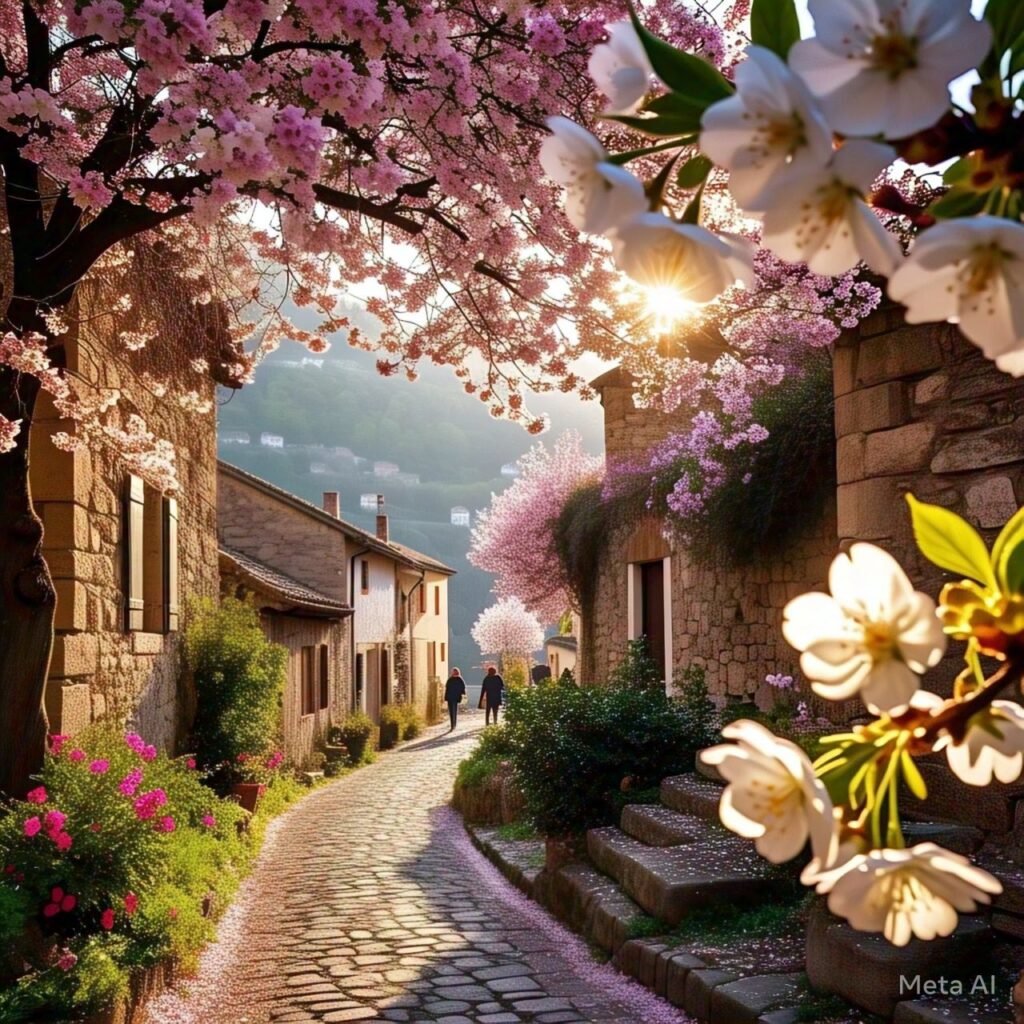
In southern Europe, March heralds the first signs of spring with charming floral displays and large, vibrant carnivals—some of which may have begun or even concluded in February.
Italy’s Sicily
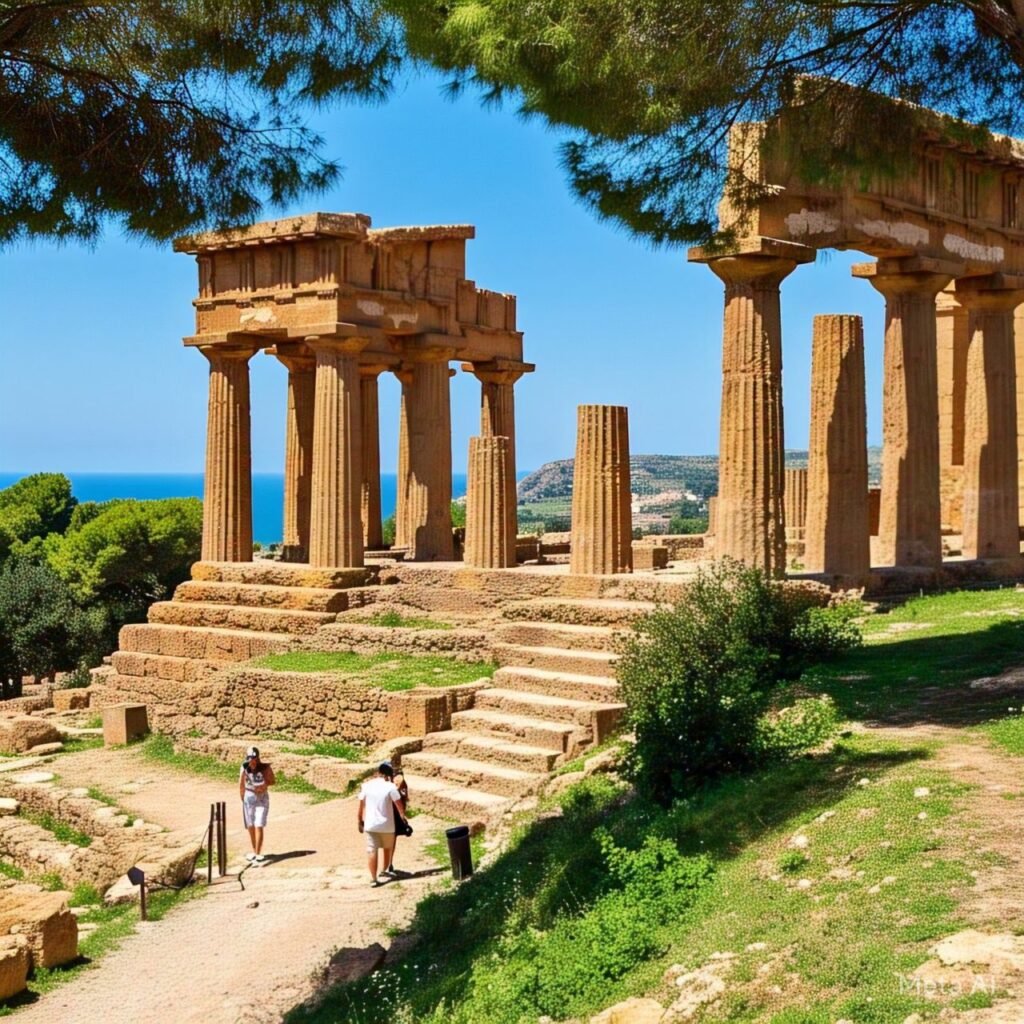
Oh, mio amore. Without a doubt, Sicily is the best island to visit in Italy. While The White Lotus may have made the Mediterranean’s largest island a must-visit for many, thanks to the silver-screen-worthy sands of Cefalù, luxurious resorts, and waters so sparkling they seem suited for an iconic “Peppa Pig” murder, this island offers more than just sun, sea, and sand. In March 2025, this is particularly the case when all eyes are directed toward the historic town of Agrigento, which has been designated as Italy’s Capital of Culture for 2025. Agrigento’s Valle dei Templi, a sprawling archaeological and World Heritage Site filled with ancient Greek temples, is a breathtaking experience as you stroll along the ridge that connects these historical marvels.
The Festival of Almond Blossom, which will take place between March 1 and March 10, 2025 (instead of February as in 2024), adds a splash of bright white. The ancient sights will be framed by delicate flowers, and folk performances and events will add to the festival’s allure. However, don’t restrict yourself to Agrigento alone; the island comes alive in spring with hiking trails adorned with wildflowers, opportunities to score great deals on Sicily’s tranquil villas, and an abundance of festivities such as the Festa di San Giuseppe in Palermo on March 19th.
Spain’s Murcia
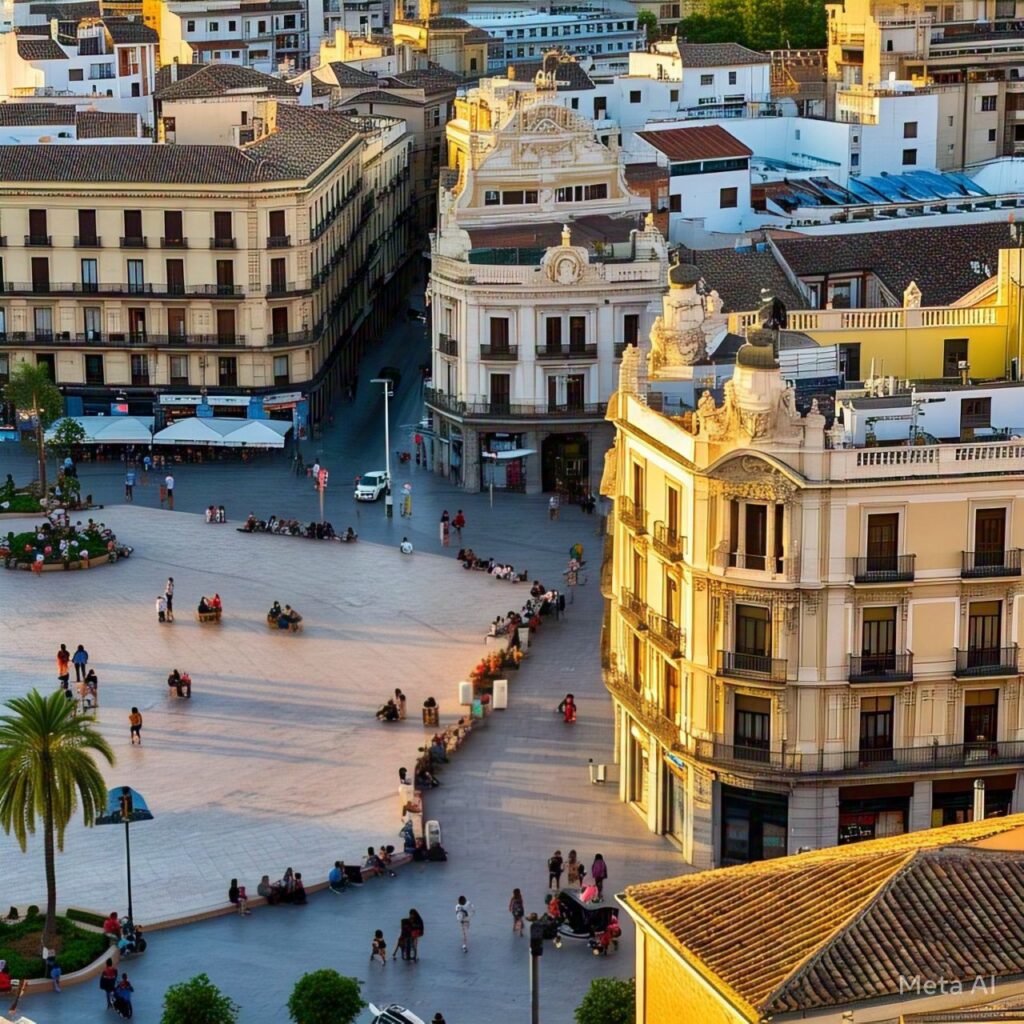
The Region of Murcia is criminally overlooked as it sits between two of Spain’s major players, Andalusia and Valencia. This lack of awareness among international visitors is a boon for the region, allowing for inexpensive finds along its stunning Costa Cálida, winery tasting menus that are reasonably priced, and Roman archaeological sites that are not crowded.
Regardless of which season you come, Murcia offers numerous activities. Explore the historic Roman Theatre in Cathagena, take in the elaborate neo-Islamic design of the capital city’s namesake at the Real Casino de Murcia, and traverse the Murcia wine route to sample the delectable Monastrell grape. In March each year, the region also experiences one of the most stunning floral displays in Europe. If you take a detour to Cieza, you will discover a landscape filled with the bright blossoms of fruit trees. Peach trees flourish in great numbers, while the magenta and pink hues stretch across thousands of hectares of the countryside, offering a stunning setting for leisurely strolls.
Top European cities to explore in March 2025
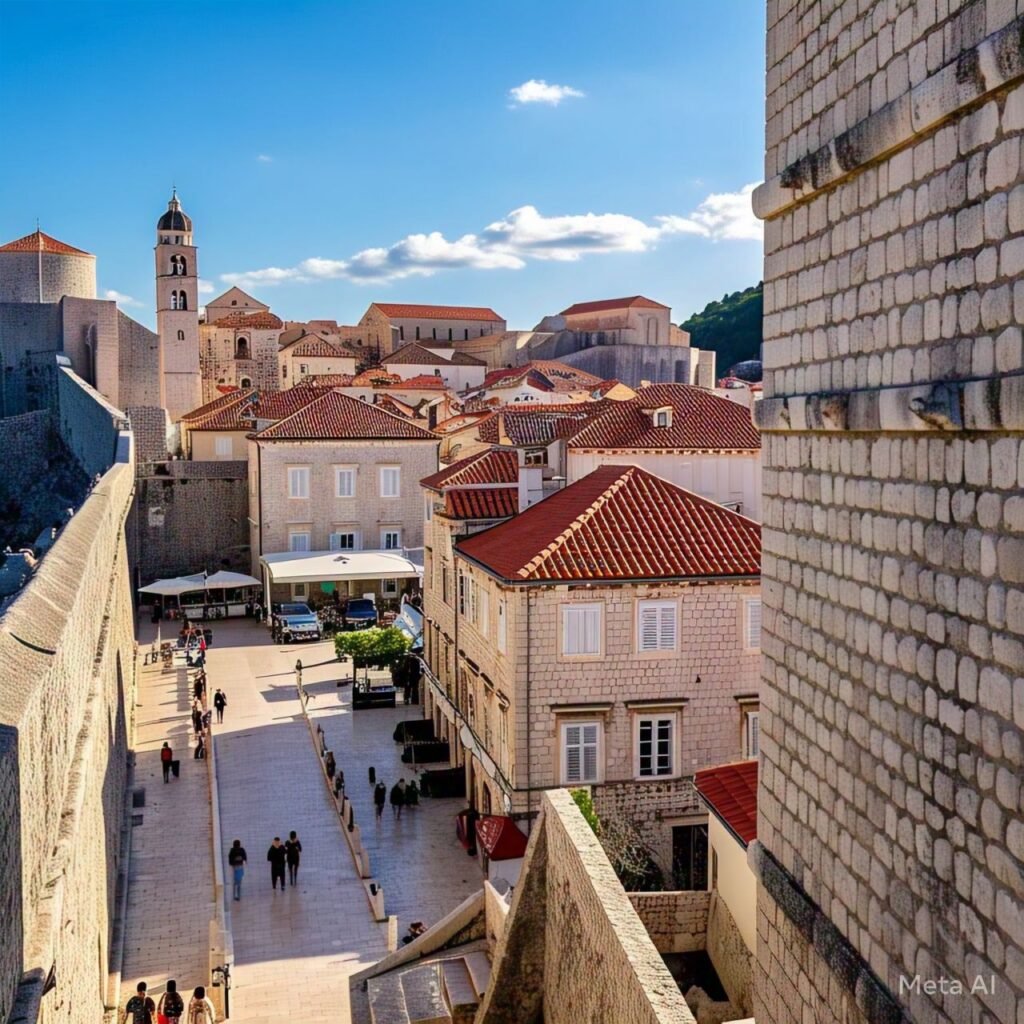
Hunting for a brilliant city getaway this March? Take my advice and spend a few days in Seville for a warm, laid-back, and tasty experience. Alternatively, organize a journey to one of the places below for a spirited festival or sophisticated occasion.
Croatia’s Dubrovnik
The popularity of Game of Thrones has turned Dubrovnik into something akin to a theme park, making it difficult to enjoy the ancient cobbled streets and splendid museums or to walk along the ramparts without contending with large crowds. While Croatia’s premier tourist hotspot attracts throngs of people all year long, I recommend March for a visit that’s not quite as intense. In March 2025, the number of cruises planned to dock at the fortified city is limited, in contrast to nearly daily arrivals starting in April. The city shifts from busy to unbearable with the influx of thousands of cruising day-trippers at once, so visiting in early or mid-March can help you avoid this.
Although the weather may not be ideal for swimming, you will probably experience sunny days with temperatures hovering around a comfortable 16°C (61°F), allowing you to enjoy what is essentially an open-air museum. Additionally, as fewer individuals are heading to Dalmatia for a beach getaway, it’s often possible to find discounts on sea-view villas in Croatia prior to the influx of school Easter holiday crowds. To enhance your trip to Croatia with a twin-city break, think about visiting Zagreb, the capital of Croatia, from March 19 to March 23, 2025, for the Zagreb Festival of Lights.
Spain’s Valencia
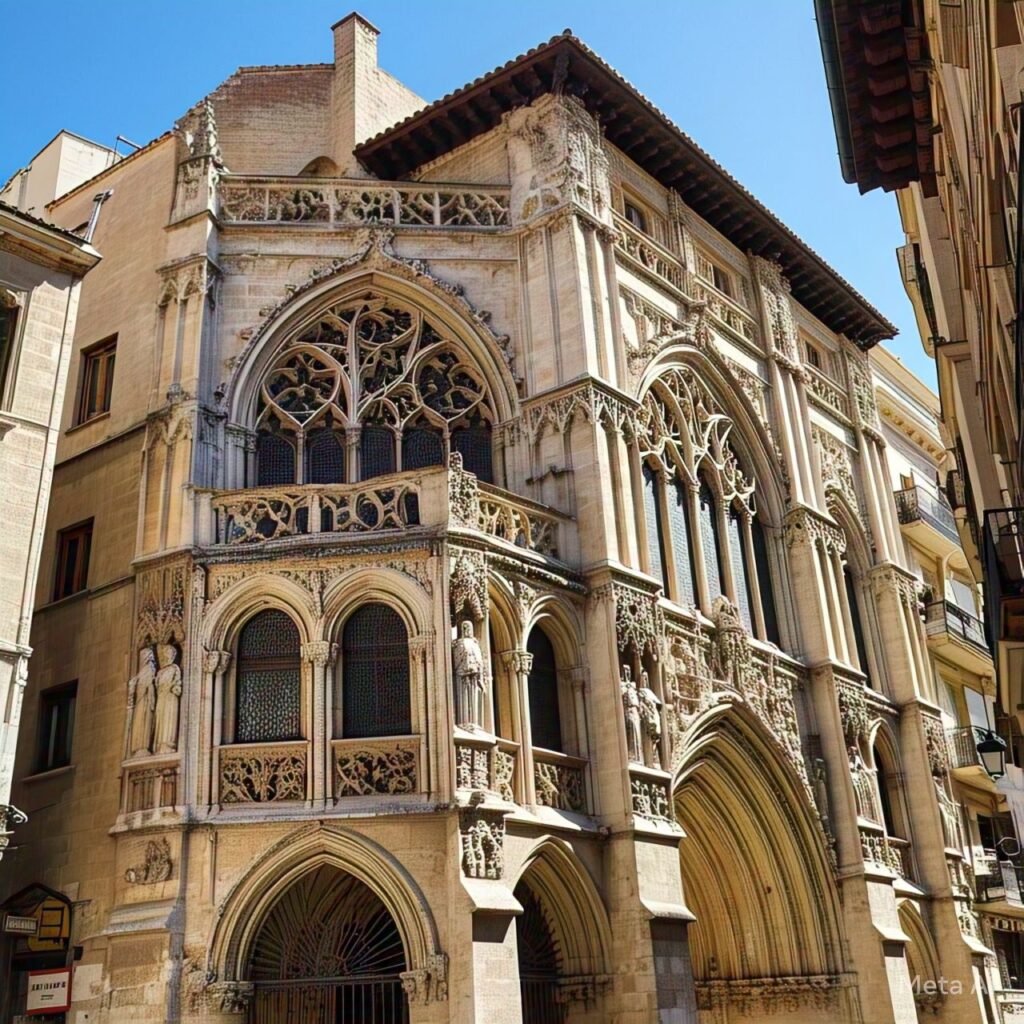
Valencia makes for one of the best city breaks in Spain, no matter the season. Spain excels in many areas, and the country’s third largest city embodies this: it is home to Paella, features sandy urban beaches, boasts an Old Town rich in architectural gems like the UNESCO-listed La Lonja de la Seda (The Silk Exchange), and showcases magnificent religious edifices. Additionally, the Ciudad de las Artes y las Ciencias houses a modern collection of cultural venues, located within a former riverbed.
What is the reason for a visit in March? During the Fallas festivities. During the period from the 1st to the 19th of the month, the city is animated by bonfires, ritual burnings, and fireworks. Fire is the very essence of this festival, stemming from an old woodworker tradition where burning items signalled winter’s end and spring’s beginning. Examine the calendar to determine the optimal days for attendance, since the major events will occur between March 15 and March 19, 2025.
Switzerland’s Basel

Switzerland often brings to mind cinematic images of jagged mountain peaks, snow-laden landscapes, and pristine valleys. However, the country also boasts some cities that are seriously underrated and often overlooked in favor of its natural landscapes. One of these is Basel, which serves as the cultural capital and is the third-largest city in the country. It’s a beautiful city with numerous international offerings, located on the banks of the Rhine River and just a short distance from France and Germany. Throughout the year, you can dedicate whole days to exploring renowned museums like the Kunstmuseum, which houses Switzerland’s largest and most significant collection of Fine Art, and Museum Tinguely, honoring the works of sculptor Jean Tinguely from Switzerland.
The primary reason to visit at this time is the Basel Carnival. Set to take place from March 10 to 12, 2025, the UNESCO-recognized event is one of Europe’s largest and most elaborate carnivals, occurring later due to Easter. The next days following the Morgestraich early-morning call on Monday mark the beginning of a whirlwind of drums, lanterns, masks, and festivities. The two afternoon Cortège parades are the best opportunities to see all the costumes and Guggenmusik, the brass bands, pass by.
Ireland’s capital, Dublin

This year, St. Patrick’s Day falls on a Monday (March 17, 2025), making it ideal to plan a long weekend in Dublin, the capital of Ireland. In addition to the festivities, the city boasts an excellent cultural scene that will occupy your days prior to a night filled with beer. However, if you opt for a tour of the Guinness Storehouse to discover the brewing process of the country’s most famous beer, you will probably start earlier.
There are also many sober sights to take in. Discover the reasons behind Dublin’s designation as a UNESCO City of Literature while touring the beautiful, dark-panelled library of Trinity College and the Dublin Writers Museum. Explore the country’s past at Dublin Castle and the National Museum, but particularly at Kilmainham Gaol, which has been transformed from a prison into a history museum. Then, immerse yourself in the fun at some of Ireland’s finest traditional pubs – even if you miss Paddy’s Day, the city’s sessions (live music) are enticing every day of the week.
March holiday destinations in Europe with the highest temperatures
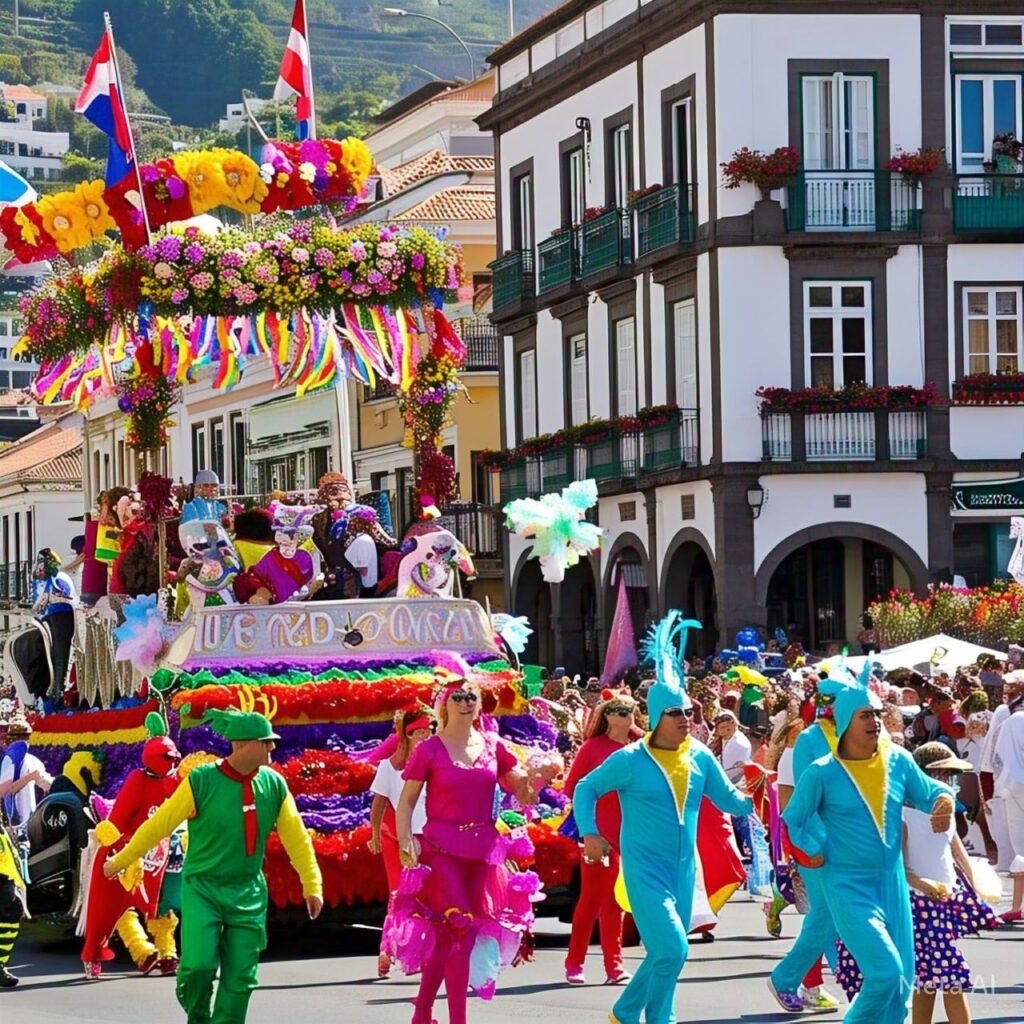
Looking for the final rays of winter sunshine? Focus on the southern part of the continent, where some of the finest islands await for a sunny escape. Take pleasure in the fact that, in 2025, the more popular European family-friendly destinations will not welcome the Easter school holiday crowd until April.
Spain’s Canary Islands
The southernmost archipelago of Spain is nearer to Morocco than to the Spanish mainland, which makes this island group one of Europe’s top beach destinations throughout the year. Gran Canaria is typically among the warmest islands, with daytime temperatures in March averaging a pleasant 19°C (67°F), though it is often warmer. Select with care from the eight primary islands, as each provides a somewhat distinct experience, although the carnival season will be in full swing across most of them in March 2025.
If you’re looking for a Spanish destination that’s more unusual, consider La Palma or La Gomera, the latter of which is crisscrossed with hiking trails and features a laurel forest. To experience the biggest party, head to Tenerife, the largest of the Canary Islands, for the Brazilian-style Carnival of Santa Cruz de Tenerife, kicking off in January and ending on March 9th in 2025. Or go to Fuerteventura for water-based wind sports. The Canaries are among the best options for a well-rounded, warm winter sun destination.
Portugal: Porto Santo & Madeira
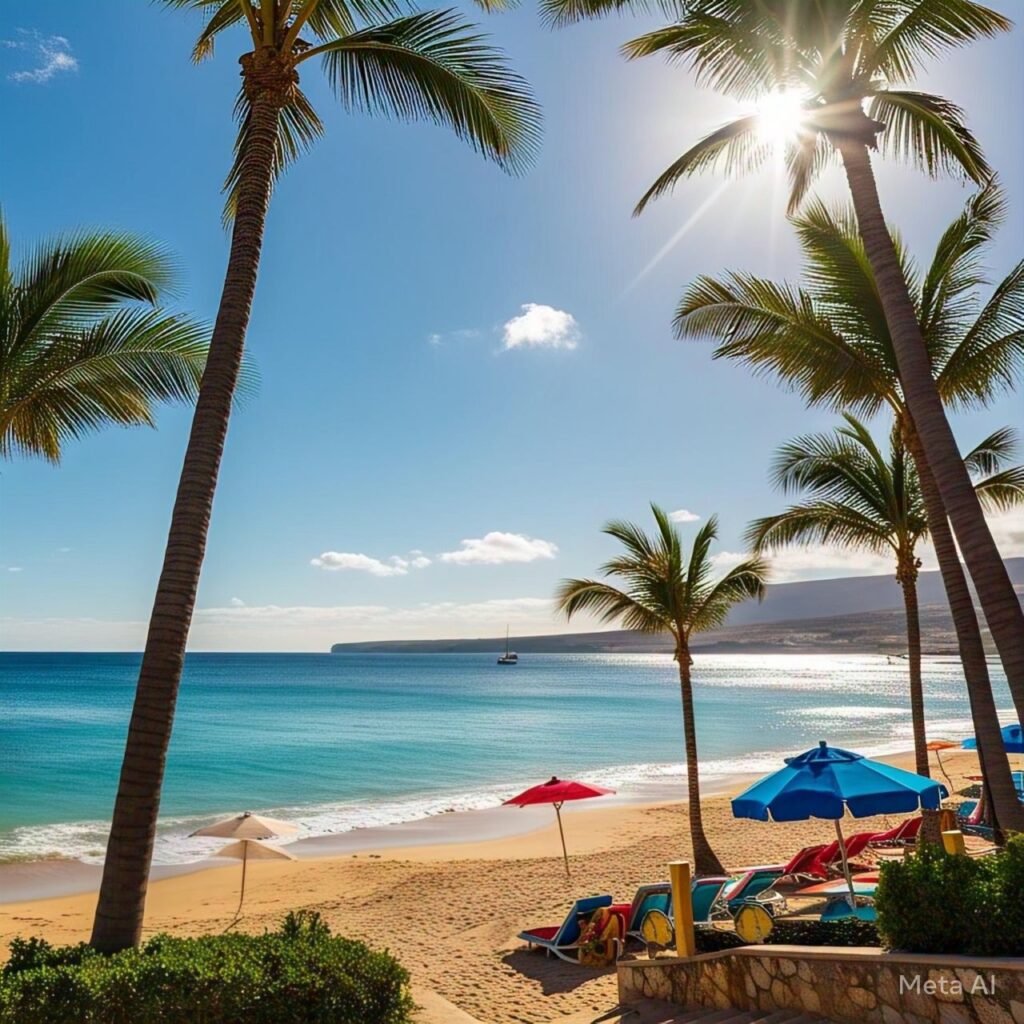
Madeira, an autonomous archipelago of Portugal located north of the Canary Islands, also provides excellent offerings, with Porto Santo Island typically experiencing daytime temperatures around 18°C (65°F). Madeira actually has a climate reminiscent of spring for most of the year, ensuring that the islands remain delightful in both winter and summer. I recommend a twin-island visit in March 2025. Begin your journey on Madeira, the archipelago’s largest island that shares its name, where you can relax in natural lava-formed pools and hike Portugal’s stunning mountain trails.
The two-week carnival festivities, primarily centered in the capital Funchal, are the main attraction of March. These celebrations will take place from February 26 to March 9 in 202 year. Anticipate an abundance of flower-themed outfits and vibrant dancers, complemented by the local Madeira wine or poncha (a traditional sugarcane rum beverage). After the celebrations, take a two-hour ferry ride to Porto Santo, Madeira’s little sister and the complete opposite of Madeira. As you arrive at the expansive island of golden sand, say farewell to rugged mountains and beaches of pebbles, and hopefully secure a good resort deal to relish the tranquil coastlines.
Malta
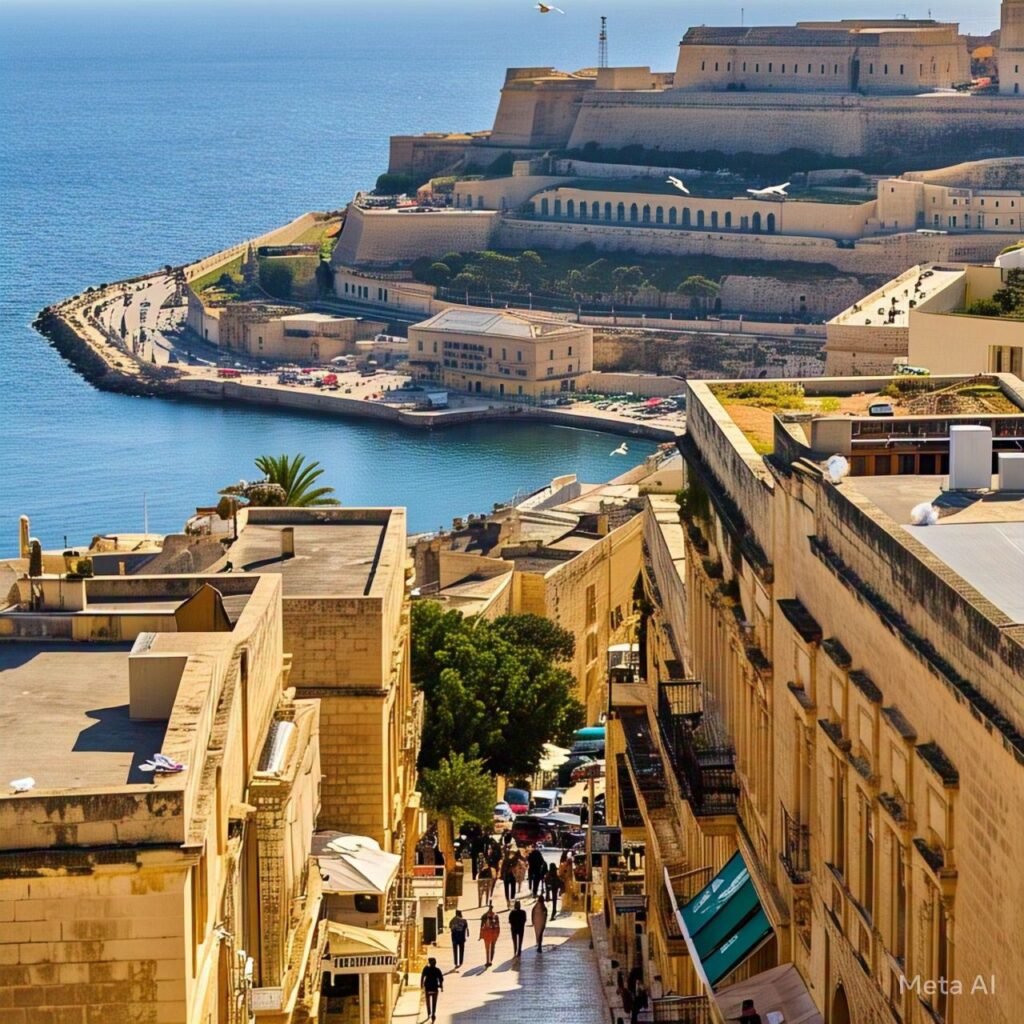
If you want a winter sun city break, Valletta—Malta’s capital, bathed in sunshine and featuring honey-coloured architecture—is the perfect option. As one of Europe’s warmest countries in March, the daytime temperatures typically hover around 17°C (63°F), making it perfect for sunbathing and sightseeing.
Immerse yourself in history among the jumble of medieval sandstone structures scattered throughout the capital, delve into the intriguing collection of museums, and see if you can attend one of the Mużika Mużika concerts—essentially the national song competition—taking place in March 2025. For a beach escape from the city, I recommend Gozo, just a short ferry ride from Malta. In March, you can find good deals as some resorts reopen after winter.
Where can you see the Northern Lights in Europe during March?

As the spring equinox approaches, specifically on March 20th, 2025, aurora activity tends to intensify due to robust solar winds that frequently bring invigorating glimpses of the northern lights. This year is anticipated to be especially remarkable due to the solar cycle reaching its peak in 2024. Are you seeking snow that offers more chances for skiing? Look at my suggestions for places to visit in Europe in January.
Lappland in Schweden
While Finnish Lapland may steal the spotlight during the holidays, by March, with Christmas well in the rearview, you might seek a more genuine experience that Sweden provides, far from the legendary “Santa’s Village.” Another advantage is that the exchange rate in Sweden is generally more advantageous than that of other Nordic countries. But what else makes this one of the best end-of-winter destinations in Europe besides the chance to see the northern lights?
To begin with, it can be accessed by train, and it is hoped that by March there will be no track problems. It is possible to cycle from Stockholm to the northern Abisko National Park, crossing the Arctic Circle along the way. However, you can take a sleeper service or break up the daytime journey by starting in Luleå (shown above). Secondly, the amazing ICEHOTEL in Jukkasjärvi (just hop off the train in Kiruna), built from ice each year in November, is still there. This one-of-a-kind lodging, which changes every year and where you sleep on and are surrounded by ice, typically doesn’t melt until April. Due to March being one of the quieter months, it’s a bit easier to secure one of the 12 all-ice rooms. However, I would choose Abisko National Park, a rough-and-tumble, snow-covered paradise considered one of the finest places in Scandinavia to view the northern lights.
Lofoten, Norway
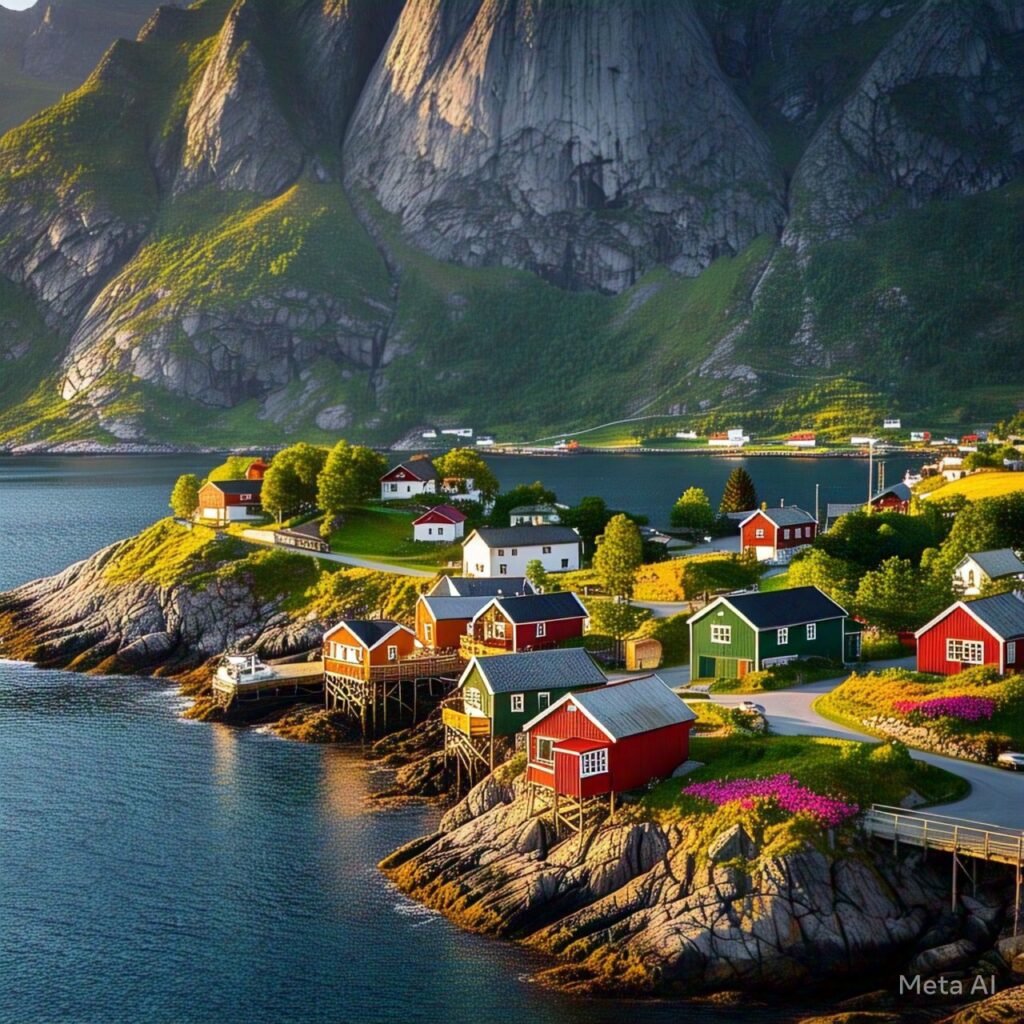
This North Atlantic archipelago, arguably Norway’s most cinematic destination, is a thin line of volcanic rocks and colorful cabins, featuring views that leave you constantly exclaiming ooh and ahh. Continuing from Abisko in Sweden to the islands is quite simple; here’s the train and bus route I took from Lapland to the Lofoten Islands, so you could merge both into a single trip. From Reine’s red Rorbu cabins with turf roofs, traditionally fishermen’s homes nestled against jagged peaks, to the picturesque Arctic beaches kissed by pristine waters, every corner of this archipelago is enchanting.
What are the reasons for visiting the Lofoten Islands in March 2025? First of all, exactly because it’s the low season. During the peak months, this area experiences significant effects from overtourism. The archipelago has only one principal highway that crosses it. And, with the influx of tourists during summer, it can become congested, creating difficulties for residents. Secondly, due to its far-northern location and minimal light pollution, Norway’s Nordland region is (hopefully) a prime spot for viewing the northern lights. While you’ll still encounter snowy winter landscapes, the absence of arctic nights means there’s ample daylight for exploration or even skiing, though most hiking trails remain inaccessible.
Island

During the year I visited Iceland over Christmas and New Year, I found that it could be cold and complicated in winter. I was sure that during the depths of winter’s almost endless nights, I would witness the northern lights. Unfortunately, I failed to take into account the extent of cloud cover, and I left without having seen even a hint of green. Based on forecasts of heightened activity, March’s spring equinox in 2025 will probably be one of the optimal periods for aurora borealis sightings in Iceland. However, although this period marks the end of winter and the days are beginning to lengthen, it is advisable to prepare for all types of weather, as rain and snow are usually quite common.
The inner gravel roads (F roads) will still be closed in March. Planning a road trip around Iceland’s golden triangle and main circular roads, which are regularly gritted, should be reserved for drivers with confidence. For the best opportunity to see the northern lights, consider taking a dedicated tour or staying away from Reykjavik, as urban lighting can hinder your ability to fully enjoy the spectacle. If you don’t happen to see the elusive performance, don’t worry: you’ll still have off-season deals and ice-caving as your reward. In March 2025, events include The Icelandic Beer Festival on the 1st, the “Food and Fun” Festival from the 12th to the 16th, and the typically rock-heavy Battle of the Bands concerts.
Unusual places to explore in Europe in March 2025

Would you rather go to one of Europe’s hidden gems? March 2025 offers a fantastic opportunity to enjoy festivals in frequently neglected towns, take a wine train journey from a 2025 Capital of Culture, or head to a micronation.
Slovenia’s Vipava Valley and Nova Gorica
The Vipava Valley, which is stunningly verdant and unjustly undervalued, has been one of my top picks for wine tourism for quite some time. In this landscape adorned with vineyards, echoing the charm of Tuscany and bordered by mountains ideal for hiking, slow travel and sustainability are perfectly aligned. Much of the enchanting art of winemaking occurs underground in candle-lit ancestral cellars, where families craft small-batch, premium wines primarily from the Indigenous Zelen grape. This process is part of a tradition in some of Europe’s most charming medieval towns.
There are two reasons why March 2025 is a great time to visit. On March 22, 2025, the first “wine train” of the season will leave Nova Gorcia, featuring onboard tastings and vintners guiding you to the valley. Secondly, it departs from a station in one of the EU Capitals of Culture for 2025. However, this cultural capital is unique in that it spans two cities and countries—Nova Gorica and Gorizia—making it a joint endeavor between Italians and Slovenians. It’s fascinating to be in a city divided by an international border and to observe the subtle differences between the Slovenian side and one of Italy’s more unconventional towns.
Fürstentum Liechtenstein

Even the minuscule Liechtenstein could be on your travel radar. However, if your plan is to go to Switzerland for snow and off-season savings, you can conveniently include a trip to one of Europe’s smallest nations. The distance from Basel to Sargans is only about two hours, followed by a 30-minute bus journey to Vaduz, the capital of Liechtenstein. Therefore, think about merging a visit to Basel’s March Carnival with a trip to Liechtenstein. The landscapes of the land-locked Principality of Liechtenstein are so similar that you may not even notice when you cross its non-EU border (Liechtenstein is in Schengen but not part of the EU).
Upon arriving in Vaduz, a diminutive capital city surrounded by vineyards, castles, and mountains, you may discover that a light snowfall in March enhances the city’s enchantment. A weekend visit can be filled with a hilltop 12th-century castle and an excellent art museum to keep you cosy away from the chill. March features several highlights, including the Monsterkonzert in Schaan, which launches the month with a marching carnival band and an atmospheric evening on March 1, 2025. Additionally, the musical Festival of Voices starts in the middle of the month. Zurich, the largest city in Switzerland, is not far away, making it easy to include the Zurich Carnival or its spring blossom festival in your travel plans.
Podence, landesgeografisch Portugal

In March, one of Europe’s most thrilling destinations is the small northern Portuguese village of Podence. This quirky location close to the Spanish border remains unnoticed for most of the year. However, in early March, everything changes with the arrival of the Carnival of Podence (1st – 4th March 2025, instead of February as in some years), which brings a surge of activity.
Despite being UNESCO-listed because of its lengthy history and distinctive costumes, most tourists in Portugal are unaware of the event. Advance planning is crucial for those who wish to attend, as the event draws thousands to the village and the existing tourism infrastructure cannot support such a large crowd. If you have difficulty finding accommodation, consider hiring a car and staying in larger towns nearby, like Braganca, Macedo de Cavaleiros, or even Vila Real.
What is it that makes this little random carnival so special? To begin with, it’s about the tale that lies behind the distinctive costumes and festivities of this out-of-the-way area. The origins of the carnival were connected to themes of fertility, paganism, and rites of passage, as well as to the celebration of winter’s end. Secondly, the ‘Caretos’ performances, clad in traditional vibrant streamer costumes and masks, are nearly mesmerizing. During the four-day celebration, bonfires are ignited, the sound of the gaita (a bagpipe from Northern Portugal and Spain’s Galicia region) echoes in the mountain air, and the dancing Caretos swirl around torches with flames on top. It’s an event that is colourful and confusing, and at times nearly satanic, but the trip to attend it is well worth it.